-
 Bitcoin
Bitcoin $119100
-2.16% -
 Ethereum
Ethereum $4300
-0.31% -
 XRP
XRP $3.171
-2.99% -
 Tether USDt
Tether USDt $1.000
-0.01% -
 BNB
BNB $814.1
-1.33% -
 Solana
Solana $176.5
-4.67% -
 USDC
USDC $0.0000
0.00% -
 Dogecoin
Dogecoin $0.2267
-5.83% -
 TRON
TRON $0.3465
2.15% -
 Cardano
Cardano $0.7870
-4.98% -
 Chainlink
Chainlink $21.66
-2.27% -
 Hyperliquid
Hyperliquid $43.89
-4.62% -
 Stellar
Stellar $0.4414
-3.35% -
 Sui
Sui $3.707
-6.73% -
 Bitcoin Cash
Bitcoin Cash $599.1
3.73% -
 Hedera
Hedera $0.2504
-6.96% -
 Ethena USDe
Ethena USDe $1.001
-0.01% -
 Avalanche
Avalanche $23.21
-4.99% -
 Litecoin
Litecoin $121.1
-3.55% -
 Toncoin
Toncoin $3.415
0.45% -
 UNUS SED LEO
UNUS SED LEO $9.002
-1.24% -
 Shiba Inu
Shiba Inu $0.00001314
-5.43% -
 Uniswap
Uniswap $11.45
1.63% -
 Polkadot
Polkadot $3.926
-5.37% -
 Cronos
Cronos $0.1694
1.63% -
 Ethena
Ethena $0.8117
-2.35% -
 Dai
Dai $1.000
0.00% -
 Bitget Token
Bitget Token $4.422
-1.43% -
 Monero
Monero $264.2
-0.83% -
 Pepe
Pepe $0.00001137
-8.29%
What is a consensus mechanism in a cryptocurrency?
Cryptocurrencies use consensus mechanisms like Proof-of-Work (PoW), Proof-of-Stake (PoS), and Delegated Proof-of-Stake (DPoS) to validate transactions and secure the blockchain, each offering different trade-offs in speed, security, and energy consumption.
Mar 12, 2025 at 04:35 pm
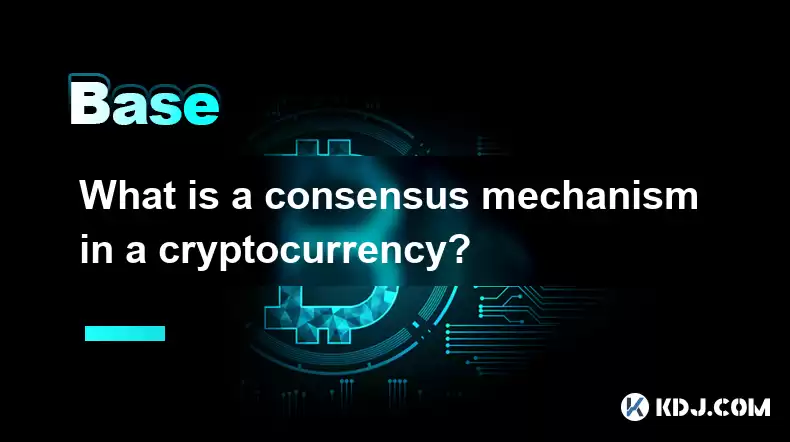
Key Points:
- Consensus mechanisms are crucial for maintaining the security and integrity of a cryptocurrency network. They determine how transactions are validated and added to the blockchain.
- Different cryptocurrencies utilize various consensus mechanisms, each with its own strengths and weaknesses regarding speed, security, and energy consumption.
- Understanding consensus mechanisms is vital for evaluating the reliability and scalability of a cryptocurrency.
- Common consensus mechanisms include Proof-of-Work (PoW), Proof-of-Stake (PoS), and Delegated Proof-of-Stake (DPoS).
What is a Consensus Mechanism in a Cryptocurrency?
A cryptocurrency's consensus mechanism is the method it uses to validate transactions and add new blocks of transactions to its blockchain. This process is essential for maintaining the integrity and security of the network, preventing double-spending, and ensuring everyone agrees on the current state of the ledger. Without a robust consensus mechanism, a cryptocurrency would be vulnerable to fraud and manipulation. The choice of mechanism significantly impacts a cryptocurrency's performance and characteristics.
Proof-of-Work (PoW): The Original Standard
Proof-of-Work, famously used by Bitcoin, involves miners competing to solve complex cryptographic puzzles. The first miner to solve the puzzle gets to add the next block of transactions to the blockchain and receives a reward in cryptocurrency. This process requires significant computational power, making it secure but also energy-intensive. The computational difficulty adjusts dynamically to maintain a consistent block generation time.
How PoW Works:
- Miners receive transaction data.
- Miners compete to solve a complex cryptographic hash function.
- The first miner to find the solution adds the block to the blockchain.
- The network verifies the solution and adds the block.
- The miner receives a block reward and transaction fees.
Proof-of-Stake (PoS): A More Energy-Efficient Alternative
Proof-of-Stake is a consensus mechanism that selects validators based on the amount of cryptocurrency they hold. Instead of competing in a resource-intensive puzzle-solving race, validators are chosen probabilistically based on their stake. This results in significantly lower energy consumption compared to PoW. The chosen validator adds the next block to the blockchain and receives rewards.
How PoS Works:
- Users "stake" their cryptocurrency.
- The network selects validators based on their stake.
- Validators propose and verify blocks.
- Validators receive rewards for their participation.
- The network reaches consensus on the valid blockchain state.
Delegated Proof-of-Stake (DPoS): A Hybrid Approach
Delegated Proof-of-Stake combines elements of PoS and direct democracy. Token holders vote for delegates who will validate transactions and add blocks to the blockchain. This system aims to improve efficiency and scalability by reducing the number of validators needed. However, it introduces a potential centralization risk if a small number of delegates control a significant portion of the network's voting power.
How DPoS Works:
- Token holders vote for delegates.
- Delegates validate transactions and add blocks.
- Delegates receive rewards for their services.
- The system aims for faster transaction speeds and higher throughput.
Other Consensus Mechanisms
Beyond PoW, PoS, and DPoS, several other consensus mechanisms exist, each designed to address specific challenges and improve the efficiency and scalability of blockchain networks. These include Proof-of-Authority (PoA), Practical Byzantine Fault Tolerance (PBFT), and various hybrid approaches combining elements of different mechanisms. Each has its own trade-offs in terms of security, decentralization, and efficiency. The ongoing development of new consensus mechanisms reflects the continuous effort to optimize blockchain technology.
Frequently Asked Questions:
Q: What is the most secure consensus mechanism?
A: There's no single "most secure" mechanism. PoW's security stems from its computational intensity, making it expensive to attack. PoS relies on the economic incentive of validators not wanting to jeopardize their stake. The relative security depends on the specific implementation and the size of the network.
Q: Which consensus mechanism is the most energy-efficient?
A: PoS and its variations (like DPoS) are significantly more energy-efficient than PoW, as they don't require the extensive computational power needed for solving cryptographic puzzles.
Q: What is the difference between PoS and DPoS?
A: In PoS, any token holder can become a validator, while in DPoS, token holders elect delegates to act as validators on their behalf. DPoS aims for faster transaction speeds but can lead to greater centralization.
Q: How are consensus mechanisms related to blockchain security?
A: Consensus mechanisms are fundamental to blockchain security. They ensure the integrity of the blockchain by preventing double-spending and maintaining a consistent view of the transaction history across the network. A compromised consensus mechanism could severely weaken the security of the entire blockchain.
Q: Can a cryptocurrency change its consensus mechanism?
A: Some cryptocurrencies have successfully transitioned to different consensus mechanisms, often to improve efficiency or address scalability issues. However, such transitions are complex and require careful planning and execution to avoid disrupting the network.
Disclaimer:info@kdj.com
The information provided is not trading advice. kdj.com does not assume any responsibility for any investments made based on the information provided in this article. Cryptocurrencies are highly volatile and it is highly recommended that you invest with caution after thorough research!
If you believe that the content used on this website infringes your copyright, please contact us immediately (info@kdj.com) and we will delete it promptly.
- Dogecoin, Presale, Surge: Riding the Meme Coin Wave
- 2025-08-12 11:10:12
- Dogecoin, Tron, and the ROI Reality Check: What's a Crypto Investor to Do?
- 2025-08-12 11:15:12
- Ethereum Layer-2 Scaling Competition Heats Up as ETH Breaks $4K
- 2025-08-12 10:30:12
- China Regulation, Stablecoins, and BNB Presale: Navigating the Crypto Landscape
- 2025-08-12 11:30:12
- Meme Coins, Investment, and Token Burns: What's Hot in 2025?
- 2025-08-12 10:30:12
- BlockDAG, Chainlink, Hedera: The Cryptos Enterprises are Eyeing
- 2025-08-12 09:30:12
Related knowledge
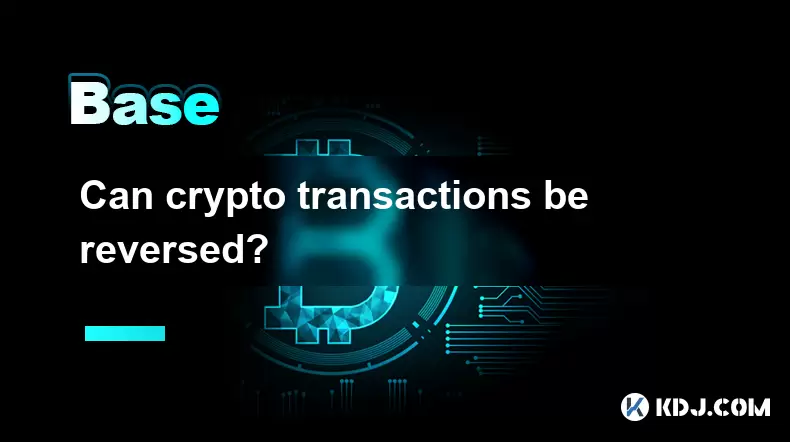
Can crypto transactions be reversed?
Aug 10,2025 at 01:35am
Understanding the Immutability of Blockchain TransactionsCryptocurrency transactions are built on blockchain technology, which is designed to be immut...
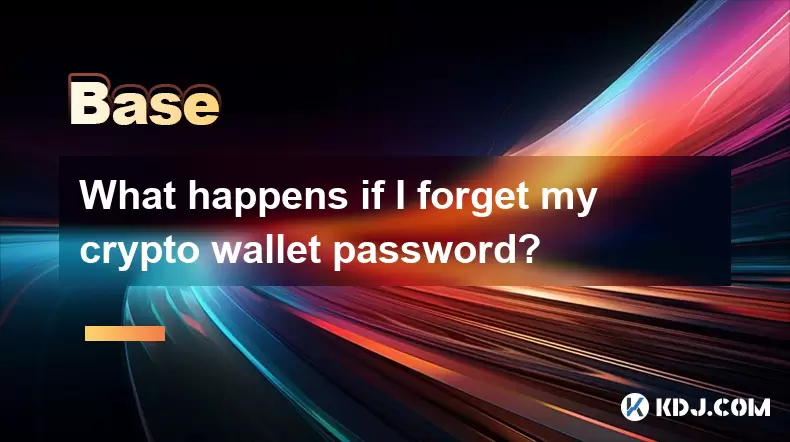
What happens if I forget my crypto wallet password?
Aug 09,2025 at 08:50am
Understanding the Role of a Crypto Wallet PasswordA crypto wallet password serves as a critical security layer that protects access to your digital as...
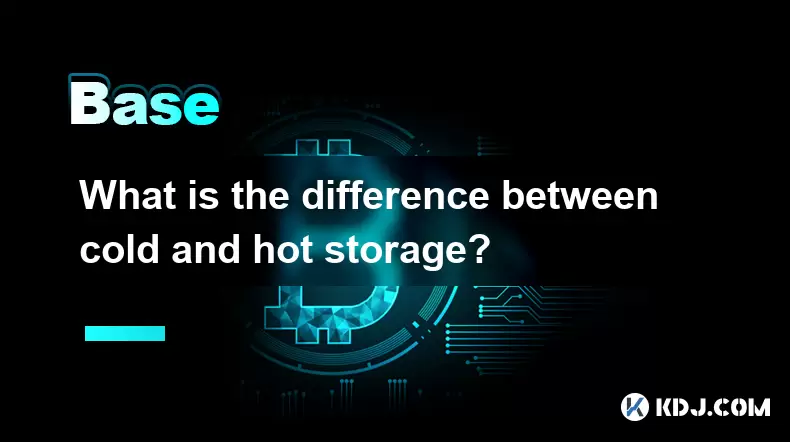
What is the difference between cold and hot storage?
Aug 12,2025 at 01:01am
Understanding Cold Storage in CryptocurrencyCold storage refers to offline methods of storing cryptocurrency private keys, ensuring they are not expos...
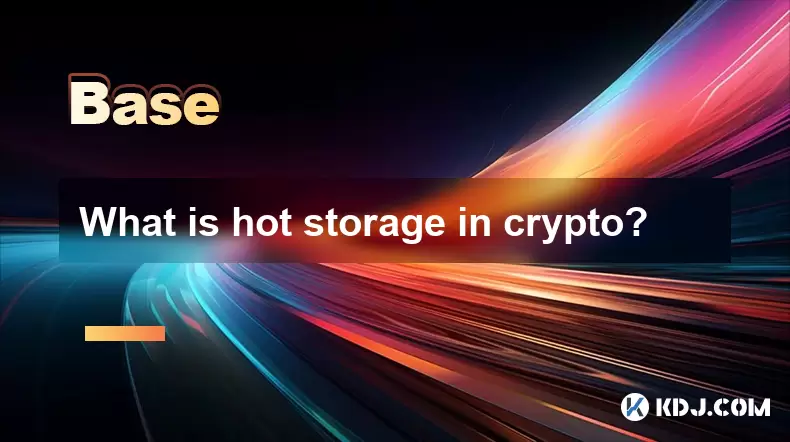
What is hot storage in crypto?
Aug 11,2025 at 07:08am
Understanding Hot Storage in CryptocurrencyHot storage refers to cryptocurrency wallets that are connected to the internet. Unlike cold storage soluti...
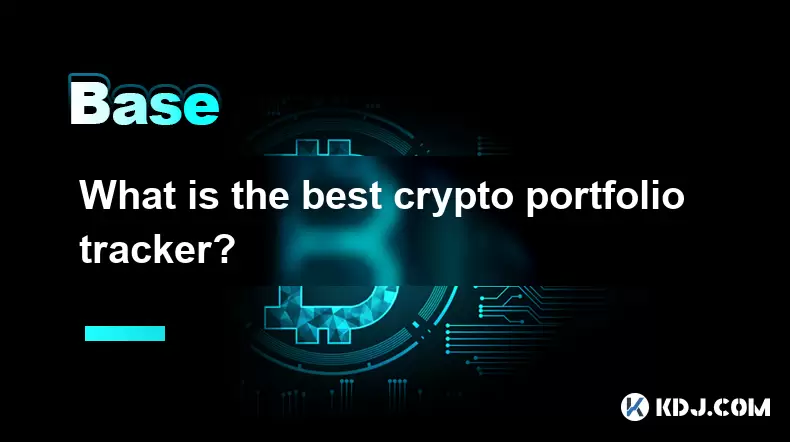
What is the best crypto portfolio tracker?
Aug 10,2025 at 05:08am
Understanding the Role of a Crypto Portfolio TrackerA crypto portfolio tracker is a digital tool designed to help investors monitor the performance of...

Why is my crypto transaction taking so long?
Aug 11,2025 at 11:35am
Understanding Blockchain Network CongestionWhen a crypto transaction is delayed, one of the most common causes is network congestion on the blockchain...

Can crypto transactions be reversed?
Aug 10,2025 at 01:35am
Understanding the Immutability of Blockchain TransactionsCryptocurrency transactions are built on blockchain technology, which is designed to be immut...

What happens if I forget my crypto wallet password?
Aug 09,2025 at 08:50am
Understanding the Role of a Crypto Wallet PasswordA crypto wallet password serves as a critical security layer that protects access to your digital as...

What is the difference between cold and hot storage?
Aug 12,2025 at 01:01am
Understanding Cold Storage in CryptocurrencyCold storage refers to offline methods of storing cryptocurrency private keys, ensuring they are not expos...

What is hot storage in crypto?
Aug 11,2025 at 07:08am
Understanding Hot Storage in CryptocurrencyHot storage refers to cryptocurrency wallets that are connected to the internet. Unlike cold storage soluti...

What is the best crypto portfolio tracker?
Aug 10,2025 at 05:08am
Understanding the Role of a Crypto Portfolio TrackerA crypto portfolio tracker is a digital tool designed to help investors monitor the performance of...

Why is my crypto transaction taking so long?
Aug 11,2025 at 11:35am
Understanding Blockchain Network CongestionWhen a crypto transaction is delayed, one of the most common causes is network congestion on the blockchain...
See all articles

























































































